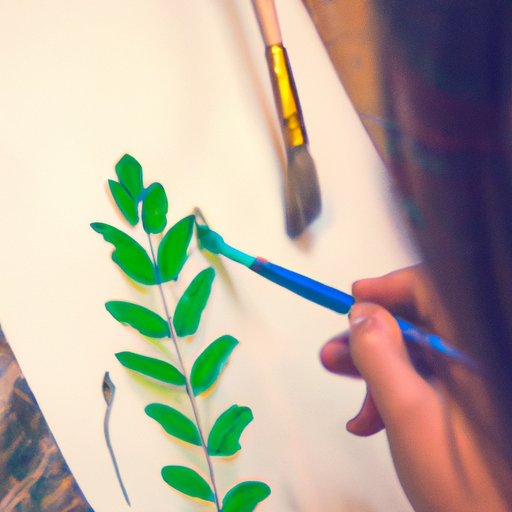How to Draw a Leaf: Tips and Techniques for Creative Success
Drawing a leaf may seem like a simple task, but it requires a certain level of skill and creativity to do it well. Whether you’re an aspiring artist or a seasoned professional, learning to draw a leaf is an essential skill that can help improve your overall artistic abilities.
In this article, we will provide step-by-step guidance on how to draw a leaf, as well as helpful tips and techniques for incorporating your creativity. Let’s dive in!
Step-by-Step Guide
First, start with a simple sketch of the leaf’s basic shape. Draw the outline of where the leaf connects to the stem, then extend the line to form the edge of the leaf.
Now, add curves to the lines to give the leaf a tapered edge. The edge of the leaf should gradually go from thick to thin, forming a pointed tip.
Next, draw the veins of the leaf. Depending on the type of leaf you’re drawing, these veins can differ in shape and size. They typically run from the base to the center of the leaf, then branch out into smaller veins.
After you have sketched the veins, add shading and texture. The shading will help give the leaf depth and dimension, while the texture will mimic the appearance of a real leaf.
Materials and Techniques
When it comes to drawing a leaf, you have several options for materials and techniques.
Paper: A smooth surface is essential when drawing a leaf, as it will help you achieve cleaner lines and smoother shading. Choose a high-quality drawing paper that offers a smooth finish.
Pencils: Use a variety of pencils to create the right effects. For outlining, use a hard graphite pencil. For shading, use softer graphite pencils that are labeled B, ranging from 2B to 8B.
Color materials: If you want to add color to your leaf, consider using watercolors or colored pencils. Watercolor paints can add a delicate touch to your drawing, while colored pencils allow you to add stronger, more vibrant colors.
Techniques: Experiment with different forms of shading to create a realistic-looking leaf. Try hatch marks for simple shading, crosshatching for more depth and texture, and stippling for a more complex and layered effect.
Design and Composition
To make your leaf drawing attractive and balanced, it’s important to pay attention to design and composition principles.
Negative space: The empty space around the leaf can be just as important as the leaf itself. Use the negative space to help you balance the composition and create a more aesthetically pleasing drawing.
Size: Pay attention to the size of your leaf in relation to the paper. Too big or too small can affect the overall composition of the artwork.
Proportion: Ensure that the size of each element of the leaf is accurate. This will create a unified and balanced drawing.
Realism vs. Stylization
When drawing a leaf, you have the choice of aiming for a realistic depiction or adding your own personal style.
Realistic drawing is a great way to improve your technical skills, and you can use real leaves as a reference. Stylizing your drawing allows you to create something unique and personal, so experiment with different styles and techniques.
Artistic Creativity
Once you’ve learned the fundamentals of drawing a leaf, you can use it as a starting point for even more creative experimentation.
Consider incorporating different colors, mediums and textures into your drawings. You can also experiment with different compositions and perspectives to create something truly unique.
Conclusion
In conclusion, learning how to draw a leaf is an essential skill that can help improve your overall artistic abilities. With this step by step guide, you’ll be well on your way to creating beautiful, realistic and stylized leaf drawings.
